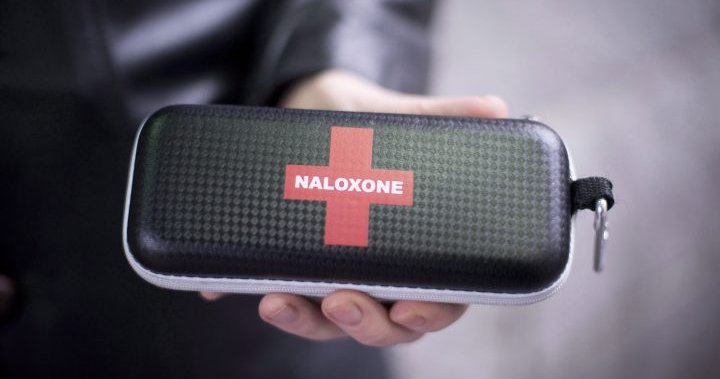
Naloxone kits should be available in nasal spray, injectable version across Canada: panel
Global News
The medication will not work on someone who has overdosed on stimulants including cocaine, MDMA (ecstasy) and Ritalin, but will not cause harm either.
People administering an overdose-reversing medication should have a choice of both versions of take-home naloxone kits across Canada — a nasal spray and an injectable that goes into a muscle — says a panel of experts that includes people who use drugs.
The new guidance applies to take-home naloxone kits that are distributed at various sites, including pharmacies, community groups and emergency departments, to anyone who could respond to an overdose.
Those who have used naloxone to save lives say having the nasal spray at hand could ensure a faster response because some people may be uncomfortable with needles. But that formulations is many times more expensive than the intramuscular version.
Authors of the guidance, published recently in the Canadian Medical Association Journal, strongly recommend federal, provincial and territorial programs be adapted so people have a choice of methods when a fast response is needed after someone has overdosed on an illicit substance.
First responders also carry naloxone, which blocks the effects of opioids such as fentanyl, heroin, morphine and oxycodone. The medication will not work on someone who has overdosed on stimulants including cocaine, MDMA (ecstasy) and Ritalin, but will not cause harm either.
The vast majority of kits that are distributed for free across the country include injectable naloxone in ampoules or vials along with syringes, gloves, an alcohol swab and a “barrier shield”to place on someone’s face before they’re given mouth-to-mouth resuscitation. An overdose can be temporarily reversed in about three to five minutes but responders should call 911 first in case the person stops breathing again.
Three one-milligram ampoules of naloxone, also known as Narcan, are in the kits distributed in B.C., where life-saving training is provided at various sites through the BCCDC.
Dr. Jane Buxton, an epidemiologist and a senior author of the guidance, said take-home naloxone programs differ among provinces and territories, with some collecting data on distribution from pharmacies while others rely on organizations that may not be providing complete information.
